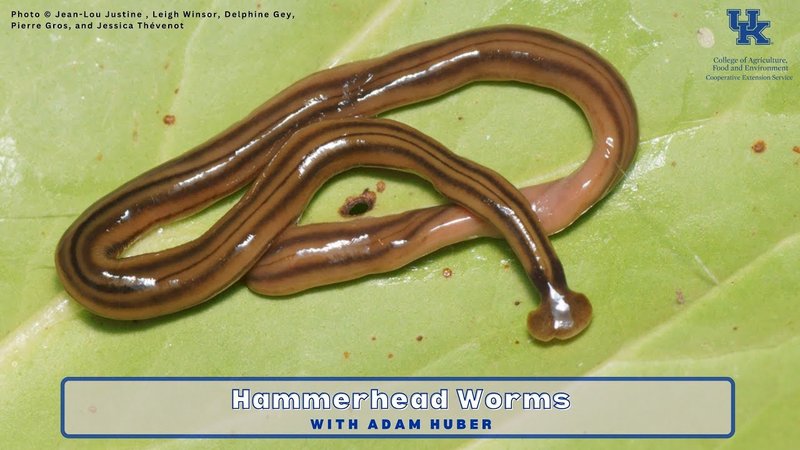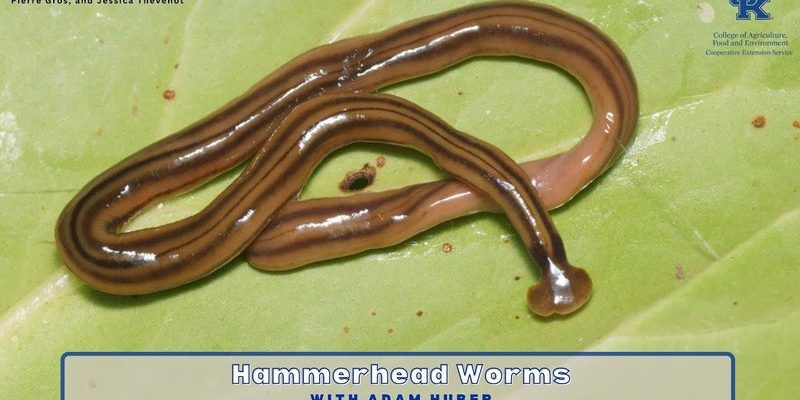
Imagine hammerhead worms as the unexpected guests at a dinner party—they’re fascinating but can also wreak havoc if left unchecked. These creatures have a unique reproductive method that allows them to thrive in various environments. So, here’s the deal: if you want to beat them at their own game, you’ve got to know how they roll when it comes to reproduction. Let’s dig into the nitty-gritty of **hammerhead worm reproduction** and what it means for your garden.
What Are Hammerhead Worms?
Before we dive into their reproduction, it’s important to recognize what hammerhead worms truly are. These vibrant creatures usually have a distinctive flattened head—hence the name “hammerhead.” Most commonly found in tropical and subtropical regions, they’re known for their striking colors, typically a mix of browns, greens, or even bright shades.
Here’s the thing: these worms belong to the *Bipalium* genus and are part of the *Geoplanidae* family. They’re predators, feasting on earthworms and other soil-dwelling organisms. So, if you’ve noticed your earthworm population dwindling, hammerhead worms could be to blame. They can be a gardener’s worst nightmare if not controlled.
Reproductive Methods of Hammerhead Worms
Now that you have a better grasp of what these critters are, let’s get into how they reproduce. Hammerhead worms have a fascinating reproductive system and two primary methods of reproduction: **sexual reproduction** and **asexual reproduction.**
*In sexual reproduction*, male and female hammerhead worms mate. They exchange sperm and then lay eggs in cocoons. A single worm can produce multiple offspring, and these eggs can survive in various conditions. This method allows for genetic diversity, which can help the species adapt to changes in the environment.
*In asexual reproduction*, which is arguably the more intriguing process, a hammerhead worm can simply split in half and regenerate itself into two separate individuals. This means that one worm can create another one without the need for a mate. You might be thinking, “How cool is that?” Well, it’s also a little alarming for gardeners since one worm can quickly become many.
The Life Cycle of Hammerhead Worms
Understanding the life cycle of hammerhead worms can provide insights into managing their population. After mating, the eggs are often laid in moist soil or leaf litter, where they develop into juvenile worms. These eggs usually hatch in warm, humid conditions, which is where they thrive best.
The tiny juveniles, which start out small and almost transparent, can grow quickly under the right conditions. You might notice them in your garden during the warm months, especially after rainfall.
Once they’re mature, which usually takes a few weeks, they can start reproducing themselves. This rapid life cycle means that if you spot one or two hammerhead worms, there’s a good chance there are many more lurking nearby. Vigilance in your garden is key!
Impact on Gardens
You might be wondering why all this matters. Why should you care about hammerhead worm reproduction? Simply put, their presence can drastically affect your garden’s health. As natural predators of earthworms, they disrupt the soil’s ecosystem.
Earthworms are vital for healthy soil; they aerate it, help with drainage, and contribute to nutrient cycling. If hammerhead worms outnumber earthworms, your garden could suffer in terms of plant health and growth. They can also predate other beneficial soil insects, making their impact even broader.
Managing Hammerhead Worm Populations
So, how do you handle these creatures without setting off a chain reaction in your garden? Here are a few strategies:
- Hand Removal: If you spot them, carefully remove them from your garden. Use gloves to avoid getting their slime on your hands, which can be irritating.
- Encourage Natural Predators: Birds, frogs, and some insects can help keep hammerhead populations in check.
- Maintain Soil Health: Keeping your soil healthy and balancing moisture can deter hammerhead worms, as they thrive in overly damp conditions.
Educating yourself and your fellow gardeners about hammerhead worms can go a long way in controlling their numbers.
Common Misconceptions About Hammerhead Worms
With a creature as unique as the hammerhead worm, myths and misconceptions abound. One common myth is that they’re harmful to humans. The truth is, while they do have a potent toxin to paralyze their prey, they pose no threat to people.
Another misconception is that they’re only an issue in tropical regions. In reality, they’ve begun to appear in more temperate areas, so any gardener could encounter them. Recognizing these myths is crucial for understanding how to effectively manage them.
Final Thoughts on Hammerhead Worm Reproduction
In summary, hammerhead worm reproduction can have a significant impact on your gardening efforts. Knowing how they reproduce—both sexually and asexually—equips you with the knowledge needed to keep their numbers in check. Remember, while they can be fascinating creatures, their presence can threaten the health of your garden, especially through their appetite for earthworms.
By staying informed and implementing some management strategies, you can protect your garden from these unexpected guests. And who knows? With this newfound knowledge, you might even become the go-to expert among your gardening friends when it comes to hammerhead worms. Happy gardening!

